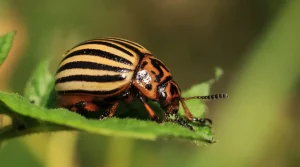Embracing a lifestyle in harmony with nature entails More than merely a fleeting trend, it represents a profound commitment to ecological integrity. Traditional pest control methods often rely on potent chemicals, posing threats not only to pests but also to human health and the environment. Fortunately, eco-friendly pest control methods offer a superior alternative. These approaches are not only effective but also prioritize environmental well-being. Let’s delve deeper into their significance, particularly in the context of California’s eco-conscious ethos.
Serving Thousand Oaks, CA, and the surrounding communities, Thousand Oaks Pest Control is dedicated to providing professional pest management services. Our approach, founded on thorough research and extensive industry knowledge, ensures effective solutions.
Which Pest Management Technique Is the Most Eco-Friendly?
Integrated Pest Management (IPM) stands out as a leading eco-friendly pest control method. This comprehensive approach employs a variety of strategies, such as beneficial insects, habitat modification, and cultivating pest-resistant plants. By integrating these methods, IPM minimizes reliance on harmful chemicals, thereby safeguarding environmental health and promoting sustainable pest management practices.
Top 12 Benefits of Eco-Friendly Pest Control
1. Environmental Preservation: Eco-friendly pest control methods uphold the delicate balance of nature by eschewing toxic chemicals, thus safeguarding habitats, wildlife, and plant species.
2. Enhanced Health: By avoiding the use of hazardous chemicals, eco-friendly pest control creates safer living environments for humans and pets, reducing the risk of allergies and respiratory ailments associated with conventional pesticides.
3. Sustainable Solutions: These methods prioritize long-term efficacy over quick fixes, emphasizing natural controls and environmental modifications to mitigate pest issues sustainably.
4. Cost-effectiveness: While initial investment in eco-friendly pest control may be higher, the long-term savings accrued from prevention and reduced damage repair costs make it a financially prudent choice.
5. Precision Targeting: Techniques like IPM precisely target specific pests while minimizing harm to beneficial insects like pollinators, preserving ecological balance.
6. Air Quality Improvement: By minimizing chemical pesticide usage, eco-friendly pest control contributes to cleaner air, benefiting human health and wildlife alike.
7. Wildlife Protection: Eco-friendly pest control methods safeguard diverse flora and fauna by avoiding pesticides that harm them, thereby bolstering ecosystem resilience.
8. Reduced Chemical Exposure: These methods mitigate human Exposure to hazardous substances reduces the likelihood of pesticide-related illnesses and promoting overall well-being.
9. Community Care: Adoption of eco-friendly pest control reflects a collective commitment to neighborhood health and environmental stewardship, fostering vibrant and cohesive communities.
10. Soil Health: Organic solutions employed in eco-friendly pest control nurture soil vitality by promoting natural nutrient cycles and microbial diversity, supporting sustainable agriculture and ecosystem health.
11. Support for Local Ecology: By harnessing natural repellents and controls, eco-friendly practices bolster local biodiversity, enriching the surrounding environment and promoting ecological resilience.
12. Compliance with Regulations: In regions like California with stringent pesticide regulations, eco-friendly pest control methods ensure legal compliance while effectively managing pest populations, aligning actions with environmental protection mandates.
Exploring Natural and Environmentally-Friendly Approaches
In California’s environmentally conscious milieu, there is a growing demand for eco-friendly pest control methods across urban, agricultural, and suburban landscapes. Integrated Pest Management (IPM) is widely embraced in agriculture, leveraging biological controls and crop diversification to manage pests effectively.
Furthermore, the use of natural remedies such as neem oil, garlic, and peppermint has gained popularity due to their efficacy and minimal environmental impact. Likewise, the shift towards organic farming practices, characterized by soil health maintenance and biodiversity promotion, reflects a commitment to sustainability and environmental stewardship.
As we strive for a more sustainable future, adopting eco-friendly pest control methods becomes both a choice and a responsibility. Whether in urban environments, agricultural settings, or residential areas, these methods offer effective solutions that prioritize environmental preservation and human well-being. In California’s culture of environmental mindfulness, these approaches resonate deeply, embodying a dedication to sustainable living and ecological stewardship. Let us continue to nurture this ethos and work collaboratively towards a greener, healthier future for generations to come.




